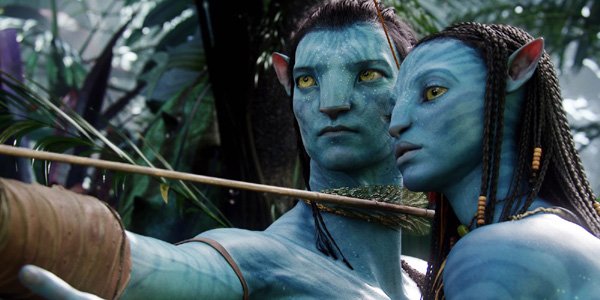Avatar Sequels Will Feature New Worlds, Habitats And Cultures

While director James Cameron has been talking about Avatar sequels ever since the first movie came out back in 2009, the truth of the matter is that we still don't really know much about them. We know that a full trilogy of sequels will be filming back-to-back-to-back, the scripts is being co-written by Cameron and Josh Friedman, duo Rick Jaffa and Amanda Silver, and Shane Salerno, and that Sam Worthington, Zoe Saldana, Sigourney Weaver and Stephen Lang will all be reprising their roles, but that's pretty much where the information stops. What will the story be about? How is Cameron planing to shoot it now that technology has moved even further in the last five years? It may be a while before we get any firm answers to any of those questions, but at the very least the director is giving us some insight to his thought process.
Cameron recently did an interview with the French news site RTL.fr (via Market Saw) and provided some new info regarding what we can expect to see in Avatar 2, Avatar 3 and Avatar 4. Right at the start of the conversation the filmmaker revealed that things are still in very early stages, still developing the script and the visual approach, but he did promise that what is in store is going to be "spectacular." Building on the world shown in the first movie, we will get to see whole new worlds, habitats and cultures in the sequels (which could possibly mean new intelligent alien races?).
As the return of Stephen Lang's Colonel Quaritch suggests, however, for all of the new that the follow-ups will deliver, they will also return to some of the most important core themes of the first film, namely man vs. nature. Said Cameron, "The primary conflict between the human view of kind of dominating nature, and the Navi view of integrating into nature stays the same, but it manifests itself in different ways."
An important part of the pre-production process has been working with the teams at the visual effects house Weta Digital to develop new software and technologies that help the filmmaking behind the sequels push even more boundaries. The plan is to shoot in native ultra-high def 4K resolution, but one element that remains up in the air is experimentation with higher frame rates. In the past, Cameron has discussed the possibility of shooting at 60fps - an even higher rate than what Peter Jackson shot at for The Hobbit - but at this stage he doesn't know if he will make the entire movie in HFR or just certain sequences.
Overall, Cameron finds himself enjoying the sequel process, as it gives him an opportunity to build on the world that he already created in Avatar and not have to spend so much time explaining the way things work. Said the director,
"The thing that’s great about Avatar is that it’s such a rich world that I can explore any theme or idea that I want. Once you have characters that an audience loves, it’s great to just surprise them and make changes and turn what they don’t expect. And you don’t have to spend so much of the movie setting up all of that stuff because the audience will remember it from the previous film"
Production on the Avatar sequels are scheduled to start in the fall, while 20th Century Fox has announced that the trilogy will be unfolding in consecutive Decembers between 2016 and 2018.
Your Daily Blend of Entertainment News

Eric Eisenberg is the Assistant Managing Editor at CinemaBlend. After graduating Boston University and earning a bachelor’s degree in journalism, he took a part-time job as a staff writer for CinemaBlend, and after six months was offered the opportunity to move to Los Angeles and take on a newly created West Coast Editor position. Over a decade later, he's continuing to advance his interests and expertise. In addition to conducting filmmaker interviews and contributing to the news and feature content of the site, Eric also oversees the Movie Reviews section, writes the the weekend box office report (published Sundays), and is the site's resident Stephen King expert. He has two King-related columns.
